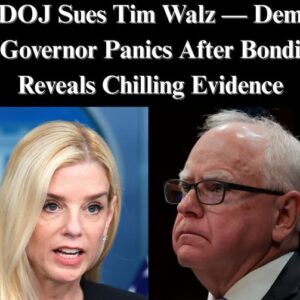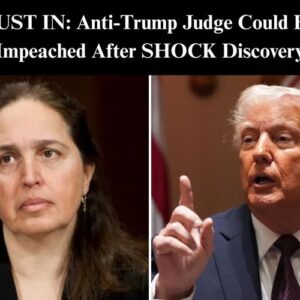When the U.S. Supreme Court issued its 7–2 decision last Friday, it reshaped the future of California’s aggressive electric vehicle (EV) mandates. What began as a narrow legal dispute evolved into a significant blow to the state’s ambitious green-energy goals—and even a liberal justice sided with the conservative bloc.
Standing Up: Fuel Producers Win Access to Court
At issue was whether fuel producers could sue the U.S. Environmental Protection Agency (EPA) over its approval of California’s plan requiring automakers to greatly reduce emissions and increase EV production by 2035—a key part of Governor Gavin Newsom’s strategy to achieve full carbon neutrality.
Justice Brett Kavanaugh, writing for the majority, spoke directly to the heart of the matter:
“The government generally may not target a business or industry through stringent and allegedly unlawful regulation, and then evade the resulting lawsuits by claiming that the targets … should be locked out of court as unaffected bystanders.”
In essence, Kavanaugh said: if regulations are so strict they hurt businesses’ bottom line—like cutting fuel sales—they deserve the chance to challenge them in court. The Court found the fuel producers satisfied the three legal pillars of standing: direct financial harm, causation from the EPA’s approval, and a reasonable expectation that a court victory would ease their losses.
This decision revives the lawsuit from Diamond Alternative Energy and other petroleum groups, which was previously dismissed for lack of standing.
Beyond Standing: A Message to Agencies and States
Though the ruling focused narrowly on legal standing—not the legality of California’s EV rules—it sends a powerful message:
Industry Cry for Access
It lowers the barrier for industries hit by regulation to challenge rules they see as unlawful.
Uncertainty for State-Level Climate Efforts
The ruling does not invalidate California’s regulations—but it does open the door to attacks against them.
With 17 other states and Washington, D.C., adopting California-like standards, the ripple effects could be widespread.
Regulatory Warning
Federal bodies and states must be prepared to defend the real-world effects of their rules. If an agency approves a measure, courts may assume it has impact—and grant standing—absent strong evidence otherwise.
The Dissents: Worries About Corporate Power
Justices Ketanji Brown Jackson and Sonia Sotomayor dissented sharply, warning the Court’s decision could unduly empower corporate litigants. Jackson argued the case was already moot and accused the Court of siding with “moneyed interests.”
Sotomayor argued the Court should have postponed the question of standing until California’s current rules were permanently in effect, not while future regulations remained in flux.
The Political Ripples: Trump’s Executive Pushback
This ruling followed quickly on executive actions by Donald Trump, who recently used congressional resolutions to dismantle key parts of California’s green-energy agenda. His stance aligns with Burgum’s confirmation and other steps to roll back environmental oversight.
As Trump positions for a possible 2028 run, California’s fight to stay green becomes a national battleground.
Meanwhile: Turf War Over the National Guard
In a parallel legal drama, federal appeals courts have weighed in on President Trump’s deployment of the California National Guard to Los Angeles. California filed suit under the Newsom v. Trump case, claiming federalization without state consent violated both federal and state authority.
U.S. District Judge Charles Breyer initially ordered the Guard be returned to California’s control, citing the 10th Amendment. But a Ninth Circuit panel stayed that order—granting Trump temporary control pending further review.
The appeals court applied a deferential standard, effectively preserving federal deployment for now.
Critics raise concerns about the Posse Comitatus Act, which restricts military forces from civilian enforcement—a question Breyer has asked the parties to brief.
Why This Matters: Energy, Autonomy, and Federal Power
1. The Fuel or EV Divide
Fuel producers argue that forcing automakers to sell more EVs hurts their business, especially when mandates come without Congressional approval.
California counters that its carbon-reduction efforts are driven by the Clean Air Act—an environmental law crafted to address climate and air quality concerns.
2. State Power vs. Federal Oversight
California claims its waiver under the Clean Air Act grants it unique authority to regulate vehicle emissions. Federal challengers say those powers don’t extend to unrestricted EV requirements.
3. Military Oversight in Domestic Affairs
The Guard dispute raises constitutional questions about the president’s power to federalize state troops, and when such moves cross constitutional lines.
Looking Ahead: Court Battles That Still Lie Ahead
Merits of the EV Mandate Challenge: The fuel producers now may argue in court that California’s rules exceed authority, potentially paving the way for regulation rollbacks.
The Guard Deployment Case: The Ninth Circuit has temporarily upheld Trump’s federalization. But the case could go further, possibly even reaching SCOTUS.
Political Stakes of 2028: With California’s green policies representing progressive ideals, this moment has significance far beyond the courtroom—it shapes national narratives.




